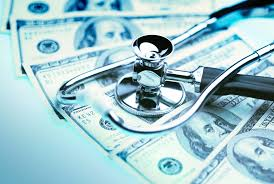

prescription drug. These ads are legal in most countries, but in the US they're everywhere. On average 80 of them air every hour on American television. Ask Your Doctor. Ask your doctor. My doctor told me, ask your doctor. The American Medical Association, a major group of doctors, has called for a ban on these directo consumer ads, but there's a case to be made for them too. So today we'll take a look at both sides.
First a little. Background. Before the 1980 S prescription drug commercials were unheard of in the US, drug companies focused their marketing solely on doctors and they didn't want to hurt those relationships. When asked by Congress in 1984 if direct consumer advertising should be allowed, one pharmaceutical executive said the direct advertising of prescription pharmaceuticals to consumers would be detrimental to the pharmaceutical industry and more importantly, a potentially disruptive element in our medical delivery system as a whole. And an executive at Sharing Plow, which is now part of Mer, said. We have serious concerns about proposals to allow advertising directly to patients. We do not believe it is in the public health interest. Indeed, we believe that in most cases it cannot safely be accomplished.
Needless to say, they changed their minds. At the time, there was a larger cultural shift in healthcare toward empowering patients to make decisions rather than just listening to their doctors, and advertisements fit with that trend. Drug ads started appearing in print publications, but there was still another thing keeping them off of TV and that was fda's regulations at the time. They were interpreted as requiring ads to include all the information about the drugs risks and side effects which simply wasn't feasible to do in a TV or radio commercial. The way it was in a magazine, there was a bizarre loophole bow. The ads didn't have to mention the drug's risks if they also didn't mention the disease or the condition that the drug was supposed to treat. Here's what that looked like in an ad for Claritin back before it was available over the counter.
It's time. It's time. Don't wait another minute for Claraton Claret. I'll ask my doctor, it's time to see your doctor. Mr. Wilkin, the doctor will see you now at last. A clear day is here, confused. Yeah, everyone was so. In 1997, the FDA clarified that the industry could run the full drug ads and wouldn't have to give all the risk information from the label as long as they included the major side effects and referred viewers to another source for the rest.
That's why the commercials direct us to phone numbers or print ads, come for the pharmaceutical, find print, stay for the secret to crisp contact and soggy conditions that new FDA guidance removed the main barrier keeping drugs off of television. And you can guess what happened next. Spending on ads quadrupled by 2 thousand and four. And now we know the names of prescription drugs like we know the names of cars and clothing brands Una. Xamax. Celebre. Flomax and HGH. And as of Thursday. Lipitoa. OH. And if you have trouble sleeping. Marlo has ambient I prefer Luna. Lipitor. Baby. Aspirin. Flomax.
Flomax and some. C. Alice, I'm just assuming, so that's how we got here. Drug ads are now the most frequent form of health communication that most Americans see. So what does that mean for public health? Are those prescriptions going to the right people, or are they going to people who probably won't benefit from the drug people for whom the potential risks outweigh the potential benefits? Well, the answer seems to be both. A clever experiment in 2 thousand and five tested this by sending actors to real primary care doctors, we helped them make appointments. We generated fake insurance cards. We did this all with the permission of the positions in advance, but the physicians didn't know which of their new patients that were coming to see them were real patients versus actors. In half of the visits, the actors reported symptoms of depression.
In the other half of visits the actors said they were feeling down after becoming unemployed. The study authors called this an adjustment disorder that's essentially a condition in which watchful waiting is probably most appropriate and in the view of many immediate prescription for any depressants, would be excessive. In some visits the actors mentioned seeing an advertisement for Panel on TV that's an antidepressant. In others they didn't bring up medication at all and the doctors seemed to take patients more seriously. If they mentioned seeing the panel commercial, they were more likely to refer patients to a mental health consultation.
And much more likely to prescribe an antidepressant. That may be a good thing for those with major depression who might benefit from a medication, but it's more questionable for those with a more temporary condition. For us, it typify the double-edged sword, which direct consumer adetizing represents. This study in others have shown that doctors can be persuaded to broaden the scope of who gets treated with drugs, and advertisements often seem designed to encourage that. Take androelel. It was approved to treat men with hypogonadism that's extremely low testosterone levels due to injury or disease. But here's how it was promoted by Abbott, millions of men 45 and older just don't feel like they used to. Are you one of them?
Remember when you had more energy for 18 holes with your buddies, more passion for the one you love. Some middle-aged men don't feel like they used to. You don't say. A study looking back at ten years of testosterone prescriptions found that only half of the men had been diagnosed with hypogonadism in the previous year. Drug ads give the industry an incentive to make healthy people feel unhealthy, is the only FDAAP approved prescription treatment for inadequate or not enough lakes, and they contribute to unrealistic expectations about what pharmaceuticals can do. So what's wrong with that?
Well every single drug comes with risks. Big ad campaigns are usually for newer drugs for which not all the risks may be known. Yet in the case of the painkiller Vox, a massive ad campaign led millions of people with arthritis to switch to Vox instead of sticking with older drugs like ibuprofen. Ask your doctor today about Vox and find out what Vox can do for you. Vox was more expensive and not actually more effective, and the manufacturer of Vox has recently pulled this popular arthritis drug from the market over health concerns. Murk withdrew the drug after it became clear that it increased the risk of heart attacks and stroke. A Kaiser Permanente study later confirmed that ad exposure was linked to inappropriate prescribing of Vox and a similar drug called Celebre, so that's a worst cases scenario. But there's also an argument that these ads can be good for public health. You, there are many diseases for which people don't seek treatment, so if you can educate through directo Consumer.
People about the fact that this can be treated, you would get a better outcome for everyone. In their view, more communication with your doctor is always a good thing, and it's up to the doctor to make the right. Prescribing decisions. Surveys of the public have confirmed that drug ads prompt people to visit their doctor in some cases for diabetes, hypertension, depression. These are conditions that are thought to be undertreated, and in the case of the HPV vaccine that's now recommended for all pre-teensens to prevent cervical and other cancers. Merrk's ad blitz for Gartiil probably reached more people than a government communications effort could, and whatever you think of erectile dysfunction drugs, they got men to see their doctors and undergo the required heart screening, potentially catching problems not yet treated. But the strongest argument in favor of drug ads may be the legal one. The Supreme Court ruled in favor of prescription drug advertising back in the 1970 s when the state of Virginia tried to prohibit pharmacists from advertising their prices. We further hold that so-called commercial speech is not wholly outside the protection of the first and 14 th amendments.
The individual, consumer and society in general may have strong interest in the free flow of commercial information. It was the first time that the Court said advertisements were entitled to free speech protections. There was only one dissenting justice at the time. William Rehnquist, who Ronald Reagan would later appoint chief Justice in his dissent request, wrote a kind of uncanny prediction of the type of commercials that would come decades later. Don't spend another sleepless night. Ask your doctor to prescribe seconda without delay. Rehqu worried that ads would quo generate patient pressure on physicians to prescribe drugs and that they'd end up being advertised on television, and as we now know, for better or for worse, that's exactly what happened.
